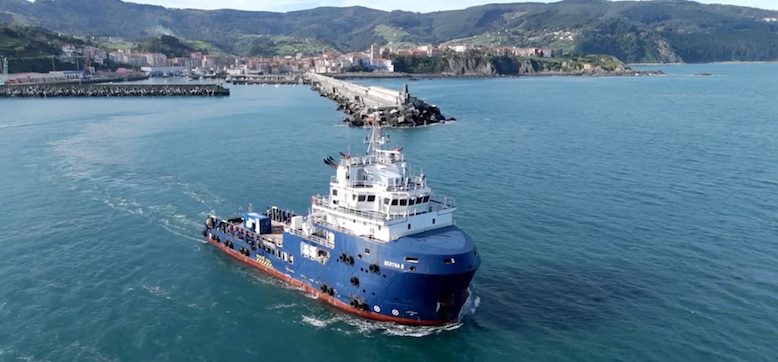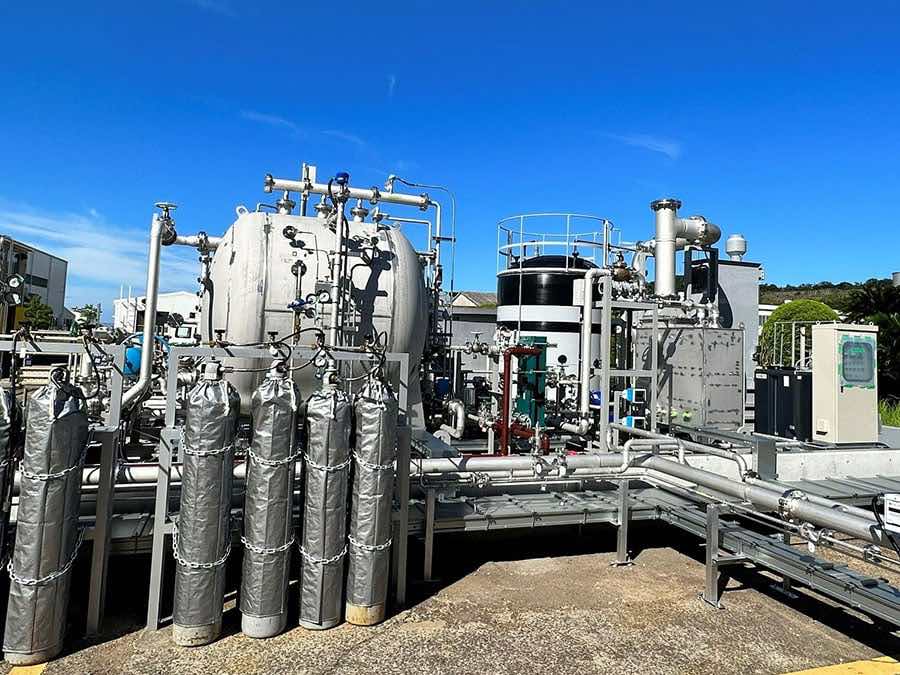28 November 2024
First Onboard Ammonia Cracking System Generating Hydrogen

H2SITE has successfully validated the first ammonia cracking to generate hydrogen (high-purity) for onboard power generation using a PEM fuel cell.
- Maritime transport represents 2% of the global greenhouse gas emissions. Ammonia and methanol are the most promising carriers being explored for its decarbonization.
- H2SITE has produced pure hydrogen from ammonia on board, through a process called “Ammonia cracking”, using its integrated membrane reactor technology. Connected to a PEM fuel cell, hydrogen is used to produce electricity for the ship’s auxiliary consumption.
- After proving its integrated membrane reactor technology in onboarded and inland applications, H2SITE continues to scale up its technology providing higher efficiency levels.
Table of Contents
Concept
H2SITE has successfully validated the first ammonia cracking system to produce high-purity hydrogen for onboard power generation using a PEM fuel cell. An integrated membrane reactor has been installed and operated on board the BERTHA B supply ship, sailing the shores of the Gulf of Biscay.
Maritime transport is responsible for 2% of global greenhouse gas emissions, presenting significant potential for emission reduction by transitioning from hydrocarbons to green fuel options, such as hydrogen.
Ammonia cracking is gaining traction as a potential hydrogen carrier for onboard applications. It can be used directly in engines, or it can be cracked into hydrogen and used in fuel cells. Before hydrogen is used, purification is necessary, especially if traces of ammonia are present.
H2SITE’s membrane reactors make sure all the ammonia is transformed while delivering high-purity hydrogen to the fuel cell in a single process step. During navigation, as part of the H2OCEAN project, H2SITE’s ammonia cracking system has successfully powered the ship’s auxiliary services. This achievement was made possible thanks to the collaboration with players active in the maritime decarbonization segment such as Zumaia Offshore, Erhardt Offshore, Ajusa, and TECNALIA, along with the participation of Enagas and ABS.

MHI Testing New Ammonia Handling System for Ships
MHI begun testing to support the market launch of an ammonia handling system comprising a fuel supply system and peripheral equipment.
Ship Nerd
“Our innovative membrane reactor technology not only brings an improvement in system efficiency but also reduces the footprint of the installation. This is especially important in applications where space is limited, such as onboard a vessel.”
“We have focused our design efforts on minimizing the ammonia consumption, which will be key for the scale-up to suit higher power output units ”.
Jose Medrano, Technical Director at H2SITE.
This project is a stepping stone for H2SITE in the decarbonization of maritime transport.
What is Ammonia Cracking?
To decompose ammonia into hydrogen and nitrogen, an ammonia cracking system is used. First, the ammonia is heated until it evaporates into a gaseous state. It is then fed into the reactor, where ammonia splitting takes place catalytically. Usually, the process runs at temperatures of 600-900 °C and a pressure of 50-100 bar. The product is then cooled and the residual by-products are separated out to obtain a pure hydrogen stream. This can then be used directly or fed into a pipeline. Industrial applications can be found, for example, in the steel industry, the chemical industry, or as in our case fuel for fuel cells.
About H2SITE
H2SITE was established in 2020 and possesses exclusive technology for reactors and separators, facilitating the conversion of various feedstocks into hydrogen. These include ammonia, methanol, or synthetic gas, as well as the separation of hydrogen from gaseous mixtures in low concentrations for applications in salt caverns or geological hydrogen.
See Also
A new study published in Oxford Open Climate Change, led by renowned U.S. climate scientist James Hansen, suggests one of the main drivers has been an unintentional global geoengineering experiment: the reduction of ship tracks.

Scientists warn global warming will accelerate – due to reduction in ship pollution
A new study published in Oxford Open Climate Change, suggests global warming will accelerate due to reduction in ship pollution


